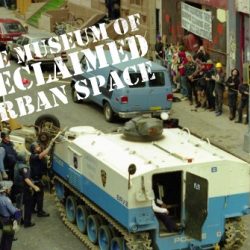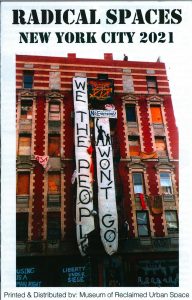July — Radical Community in the Lower East Side Part 1 of 4: What is Radical?

by John C. Harris
July 1 2021
Radical is a dirty word in some segments of society. Oftentimes our first interaction with that concept is viewed through a lens forged by fear and resentment. The word conjures up images of extremism and potentially terrorism. But that is only because of how that word is framed. That frame must be readjusted to allow for a more clear understanding of that dirty word. The recognition of radicalism as a response to a root cause of an issue has been employed by philosophers and activists from Karl Marx to Angela Davis. In her own words, Davis asserts, “Radical simply means ‘grasping things at the roots.’” In this new light the concept is so sanitized it almost feels neutralized. But we must not insinuate that radical action is unexceptional or disinterested. Instead, we must consider, when thinking of Davis’ quote, what is being grasped and why is it in need of grasping? Those engaged in radical action are grappling with the root causes of social injustices and systemic inequity. They do so to prevent the marginalized and suppressed from further exploitation. In this new light, radical, that once dirty word, is a force of positive change.
Radical action has proliferated through the Lower East Side for centuries. Including the work done by the 19th century union leaders who organized the demonstration the night of the 1874 Tompkins Square Park Riot and through the actions of progressive reformer and anarchist figurehead Emma Goldman who was once dubbed “The Most Dangerous Woman in America.” And the movement continues today. Our community continues to grasp at the roots of inequity by establishing a tightly bound network of radical spaces which serve the unique needs of the community and promote responsible answers to systemic problems. As we will see in the four part blog series highlighting the radical community in the Lower East Side, these spaces range from community institutions and duplicatable models that address the issues of housing, community sustained agriculture and food distribution, as well as cultural production. And it is our mission at the MoRUS to promote awareness of these spaces through the collections and resources in our archive and the creation of material like our Radical Spaces: New York City 2021 zine which locates and summarizes the initiatives of many groups around the city.

(Radical Spaces: New York City 2021, Zine Library at Museum of Reclaimed Urban Space)
Part 2: Housing Initiatives coming next week!
